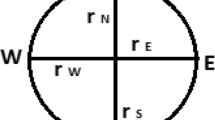Abstract
Plot sampling was conducted in the second cultivation areas of Larix olgensis in Heilongjiang Province, China. By analyzing plot investigation data, wood properties, and kraft pulps of 840 plots and 248 sample trees in industrial plantations of L. olgensis on different sites, we examined the growth process of L. olgensis industrial plantation with suitable structure, the wood fiber feature, chemical composition, physical performance and pulp characteristics. It is suggested that site conditions have major effects on plantation growth, fiber contains, fiber length, rate between fiber length and fiber width, pulping rate and pulp physics intensity. The best site for L. olgensis industrial plantation growth is site class I and site class II, which are on lower locations. Site condition has an obvious influence on the wood characteristics. Within the range of site conditions and stand densities studied, the worse the site condition, the less the fiber contains, the shorter the fiber length, and the more the 1% NaOH extraction. This kind of relationship becomes more obvious as stand age increases. However, the influence of site condition on pulping rate and pulp physics intensity is not obvious. The result provides theoretical base for cultivation of industrial fiber plantation of L. olgensis.
Similar content being viewed by others
References
Arbuxinxing. 1986. Weibull distribution and its utilization sample [J]. Forestry Translation, (1): 16–19.
Forestry Ministry of P. R. China. 1987. Professional standard of Larix olgensis and Larix gmelinii fast growth and high yield plantation [M]. Beijing: China Standard Press.
Hu Cankun. 2001. The assessment and differentiation of site quality of the commercial forest base [J]. Journal of Southwest Forestry College, 21(2): 84–90.
Li Meng, Zhang Zhongshan, Zhang Zhaorong, et al. 1998. Silvicultural patterns of building wood for Larix olgensis plantations [J]. Journal of Northeast Forestry University, 26(3): 20–24.
Li Meng, Li Changsheng, Zhang Yichun, et al. 1994. Study on stand outturn tables of wood sorts for Olga Hay Larch plantations [J]. Journal of Northeast Forestry University, 22(4): 33–39.
Li Tiemin, Du Xiangkuan, Hao Xiangchun, et al. 1996. Site index table of Huabei Larch second forest in Guancen Mountain [J]. Shanxi Forestry Science and Technology, (4): 4–7.
Liao Xianchun, Yang Zuda, Wu Hong, et al. 1977. Systematic studies on site quality evaluation of Masson Pine plantation in Yichang County [J]. Journal of Huazhong Agricultural University, 16(6): 605–608.
Liu Caifu, Chang Xindong, Liang Yutang, et al. 1998. On evaluation of site quality of Robinia pseudoacacia plantation in Liaoning Province [J]. Journal of Jilin Forestry University, 14(2): 74–80.
Liu Daxing. 1987. Study on the management density table of Larch, Scot Pine and Koran Pine plantation. In: Proceeding of forest management science and technology. Beijing: China Forestry Press, p27–33.
Ma Youping, Ai Xunru, Song Eping, et al. 2001. Compiling the site index table of Japanese larch in Changlinggang Forest Farm [J]. Journal of Hubei Institute for Nationalities (Nat. Sci.), 19(1): 24–27.
Sun Xiaomei, Li Fengri, Niu Shen, et al. 1998. A study on growth model for Larix olgensis plantation[J]. Forest Research, 11(3): 306–312.
Sun Xiaomei. 1999. Growth simulation for thinned larch plantation [J]. Forest Research, 12(5): 500–504.
Xun Shouhua, Cao Hanyu, Wu Dejun 1990. Correlation analysis between the increment and site factors of Japan Larch [J]. Journal of Shandong Normal University (Nat. Sci.), 10(3): 264–266.
Zhang Songzhi, Zhang Huijun, Jiang Ming, et al. 1999. Study on site type division and assessment of fast-grow-and-high-yield stands of Larix leptalepis in Xiaolong Mountain forest area [J]. Journal of Gansu Forestry Science and Technology, 24(2): 1–6.
Zhao Qingfeng, Guan Lipeng. 2004. Study on the site type classifies of larch plantation [J]. Protection Forest Science and Technology, 63(6): 55–78.
Zhong Congqi, Wang Zhehua. 1987. Study on the making and using of management table for Larch plantation in the Eastern mountains region of Heilongjiang province. In: Proceedings of forest management science and technology. Beijing: China Forestry Press, p63–83.
Zhu Lei, Wang Qingcheng, Wang Yongqing. 2005. Simulating management of industry plantation of Larix olgensis [J]. Forestry Science & Technology, 30(3): 20–24.
Author information
Authors and Affiliations
Additional information
Foundation project: This paper was supported by China Postdoctoral Science Foundation (2005037637), Heilongjiang Postdoctoral Science Foundation (LBH-Z05031) and Project of State Forestry Administration, China (2006-37).
Biography: WANG Shu-li (1964–), male, Ph. Doctor, post-doctor of Northeast Agriculture University, professor of Northeast Forestry University, Harbin 150040, P.R. China.
Rights and permissions
About this article
Cite this article
Wang, Sl., Wen, J., Yang, Z. et al. Effects site conditions on industrial fiber plantations of Larix olgensis . J. of For. Res. 17, 255–258 (2006). https://doi.org/10.1007/s11676-006-0058-5
Received:
Accepted:
Issue Date:
DOI: https://doi.org/10.1007/s11676-006-0058-5




